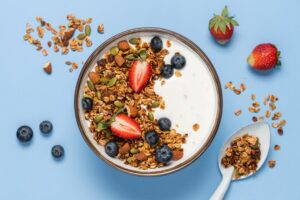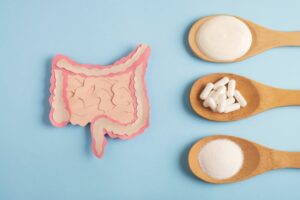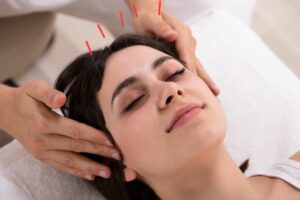Glance at the topic:
- Dental bridges have been used in dentistry for over a century. This time-tested procedure replaces missing teeth by anchoring them onto adjacent teeth or dental implants.
- The materials used in tooth implants, typically titanium, can integrate with bone tissue in a process called osseointegration, enhancing their durability and lifespan.
- While initial costs for a dental bridge might be lower, tooth implants often become more cost-effective over time due to their longer lifespan and lower need for repairs or replacements.
- The success rate of tooth implants can be as high as 98%, making them one of the most reliable and long-lasting options for tooth replacement.
Are you trying to decide between a tooth implant vs dental bridge? Choosing the right option for replacing missing teeth is important not only for your smile but also for your overall oral health. Both options come with unique advantages.
- The tooth implant benefits include longevity and the prevention of bone loss, as it acts like a natural tooth root and preserves the jaw structure.
- In contrast, the dental bridge benefits include a quicker and less invasive procedure, often making it a practical choice for those looking for a faster solution.
Understanding these benefits is crucial in making an informed decision that affects how you eat, speak, and look. So, which one is the more durable and suitable option for you? Keep reading as we explore the pros and cons of each choice to help you find the best solution for your dental needs.
Comparing Dental Bridge Cost and Tooth Implant Cost
When you need to replace a missing tooth, two popular options are a dental bridge and a tooth implant. Each has its own costs and benefits. Understanding the cost differences can help you make an informed decision based on your budget and needs.
Below is a table that compares the dental bridge cost and tooth bridge cost, conversion rates may vary:
| Description | Dental Bridge Cost USD/INR | Tooth Implant Cost USD/INR |
| Initial Consultation | $100/INR 8,000 | $100/INR 8,000 |
| Per Tooth Replacement | $500 – $700/INR 40,000 – INR 56,000 | $1,000 – $1,200/INR 80,000 – INR 96,000 |
| Dental Impressions | $50/INR 4,000 | $200/INR 16,000 |
| Dental Crowns per crown | $200 – $500/INR 16,000 – INR 40,000 | Included in implant cost |
| Lab Fees | $250/INR 20,000 | $500/INR 40,000 |
| Follow-up Visits 2-3 visits | $150/INR 12,000 | $150/INR 12,000 |
| Additional Treatments if necessary | $200 – $400/INR 16,000 – INR 32,000 | $300 – $600/INR 24,000 – INR 48,000 |
It is important to note that these costs can vary significantly depending on the location of the dentist’s office, the dentist’s experience, and the materials used for the bridge or implant. In some cases, dental treatments in India may be less expensive compared to those in America but one has to be very careful about choosing a good dentist to ensure high-quality care.
Although a tooth implant may seem pricier initially, it tends to last longer than a dental bridge, hence potentially more cost-effective over time.
Tooth Implant vs Dental Bridge Durability
Most often when people decide between tooth implants and dental bridges they consider how long each can last. This issue of tooth implant vs dental bridge durability is important because it affects long-term satisfaction as well as cost.
Typically known as strong and lasting solutions for lost teeth, tooth implants can serve you all your life if you maintain them well. In contrast, dental bridges generally stay in place for 10-15 years before they need to be replaced. This therefore implies that tooth implants are more durable than dental bridges.
Tooth Implant Vs Dental Bridge Procedure
The tooth implant vs dental bridge procedure also varies tremendously. The procedure for a tooth implant involves placement of a titanium post into the jawbone which serves as an anchor of the new tooth. This is followed by osseointegration during which there is healing and integration of the post with bone called osseointegration process then crown attachment afterwards.
On the other hand, with dental bridges; the preparation of adjacent teeth that will hold it has to be done after which they are reshaped so that they have secure anchorage points for holding it firmly while customized ones are made at this point and fixed over this foundation teeth.
Tooth Implant vs Dental Bridge Recovery Time
There are differences in terms of recovery periods between tooth implant and dental bridge recovery time. For instance, recovery time for a typical two-stage implant may take longer, usually several months. The period of osseointegration is the reason for this which normally takes place when the implant is tightly held by bone.
Conversely, dental bridges only require short recovery times. Often patients feel comfortable within a month or so after treatment since there is no bone integration involved unlike in an implant. As such, bridges are more attractive to those individuals who like quick remedies for replacing lost teeth.
However, it is crucial to select one based on personal health, jawbone quality, and individual requirements although both procedures have their own merits.
Tooth Implant Benefits and Tooth Implant Disadvantages
Tooth implants offer a modern solution for missing teeth. They provide several benefits but also come with some disadvantages. Understanding both can help you decide if this is the right option for you.
Benefits of Tooth Implants
- Longevity and Durability: One of the biggest tooth implant benefits is their durability. Tooth implants are designed to last a lifetime. They are made from titanium, which integrates with the jawbone, making them very stable.
- Looks and Feels Natural: Tooth implants look and feel like your natural teeth. They blend in with your existing teeth without the need for any visible metal parts.
- Preserves Jawbone and Facial Structure: Since tooth implants replace the root of the tooth, they help maintain the jawbone’s integrity, preventing bone loss and supporting facial structure.
- Improved Oral Health: Unlike dental bridges, implants do not require altering the surrounding teeth. This preservation of the natural teeth enhances long-term oral health.
- Ease of Eating and Speaking: With tooth implants, you can eat and speak as you would with natural teeth. There is no worry about the implant slipping or moving.
Disadvantages of Tooth Implants
- Cost: One of the major tooth implant disadvantages is the cost. Tooth implants are more expensive than other tooth replacement options, like bridges or dentures.
- Surgical Procedure: Getting a tooth implant is a surgical procedure, which comes with the usual risks of surgery, such as infection, inflammation, and pain during the healing process.
- Time-Consuming: The entire process of getting a tooth implant can take several months, as it requires the jawbone to heal around the implant.
- Requirement for Good Bone Density: Not everyone is a candidate for tooth implants. You need to have sufficient bone density, and those who don’t may require bone grafts.
- Possible Complications: Like any surgery, there is a risk of complications such as nerve damage, infection at the implant site, and sinus problems, depending on the implant’s location.
- No Insurance Coverage: Often, dental insurance does not cover tooth implants, which can make them less accessible for many people.
Dental Bridge Benefits and Dental Bridge Disadvantages
Dental bridges are a traditional treatment option for missing teeth, offering their own set of advantages and drawbacks.
Benefits of Dental Bridges
- Cost-Effective: Comparatively, dental bridge benefits include being more cost-effective than implants. They are generally covered by most dental insurance plans, making them more accessible.
- Less Invasive Procedure: Installing a dental bridge is less invasive than implant surgery since it doesn’t involve bone surgery.
- Quick Procedure and Recovery: The process of getting a dental bridge is faster. It usually requires only a few weeks from start to finish, with a much quicker recovery time compared to implants.
- Improved Appearance and Function: A dental bridge can restore the appearance of missing teeth and help with chewing and speaking, similar to natural teeth.
- No Bone Grafting Required: For patients with insufficient bone density, dental bridges can be a good option as they do not require bone grafts.
- Prevents Teeth from Shifting: Bridges help prevent the remaining teeth from moving out of place, which can disrupt the bite and lead to other dental issues.
Disadvantages of Dental Bridges
- Shortened Lifespan: The main drawback with dental bridges is their usual period of being just 5 to 15 years, depending on how well they are maintained and the general oral health, unlike implants that can last a lifetime.
- Harm to Surrounding Teeth: Sometimes they require filing down the teeth next to the bridge which may expose them to decay or damage.
- Not as Natural Feeling: The bridges tend to sit on top of the gums not functioning like a real tooth root when chewing which can be noticed by some individuals.
- Risk of Decay Under the Bridge: If food particles and bacteria get trapped under an ill-fitting bridge, it can lead to decay in these adjacent teeth.
- Aesthetic Considerations: It might be difficult sometimes to have a perfect aesthetic match with natural teeth especially if non-enamel mimicking materials are used for building a dental bridge.
- Healthy Teeth Necessary for Support: Weak neighboring teeth will not support any form of bridge thereby ruling out this option in some patients.
Knowing these pros and cons helps you make an informed decision on what is best for your teeth.
Who Is a Good Candidate for Dental Bridge?
A dental bridge can be considered as one of such options, especially when looking at cost-effective alternatives or minimally invasive procedures. A dental bridge makes use of existing teeth surrounding missing ones, holding fake ones in place. These factors should help determine if one is eligible:
- Short treatment time desired
- Fear of surgeries involved
- Healthy surrounding teeth are preferable
Who Is a Good Candidate for Tooth Implant?
Tooth implants are still the most popular among other alternatives to lost teeth due to their durability and bone conservation properties. Some of the factors to consider before choosing a candidate for tooth implant include:
- Seeking a long-term solution
- Not having other chronic conditions
- Eligible for required surgery
- Need a natural feel in the mouth
- High levels of oral hygiene
- Reasonably large amount of jawbone present
- Accept multiple visits by a dentist
- Autoimmune diseases absent in the body
- Not pregnant women at present
Dentures are removable while dental bridges and dental implants are not; therefore, patients should take this into account when making a choice about which treatment is best for their needs. It’s prudent that one consults with a dentist on his/her particular circumstances to avoid making uninformed choices.
Final Thoughts
This is an important decision because it will affect your overall well-being, not just your oral health. Each option has its own advantages, but the final choice may depend on such factors as personal financial ability and lifestyle.
However, one should always keep in mind that all these options should be discussed with one’s dentist for proper information and guidance specific to each circumstance so that the right decision can be made.
|
Glossary:
|
Discover Similar Topics: What Are Same Day Dental Implants and Are They Right for You? | Why Dental Implants Are Worth The Investment? | Are Dental Implants Safe? Everything You Need To Know | Dental Implants FAQs | Are all-on-four dental Implants Scary? | Smile Brighter with Dental Implants in Turkey: Your Perfect Solution
Frequently Asked Questions
How long does a tooth implant last compared to a dental bridge?
Tooth implants can last a lifetime if maintained properly, whereas dental bridges typically last between 5 to 15 years. The longevity of a tooth implant makes it a preferred option for many.
What are the risks of choosing a dental bridge?
A dental bridge might lead to the weakening of the adjacent teeth that support the bridge. There is also a risk of decay under the bridge if not fitted properly.
Are tooth implants safe?
Yes, tooth implants are safe. They are made from materials that are compatible with the body. However, as with any surgery, there are risks such as infection or implant rejection.
Is a dental bridge or tooth implant more painful to get?
Both procedures involve some discomfort, but pain management during and after the procedure is typically managed well with medication. The implant procedure might be more invasive since it involves surgery, potentially leading to more discomfort initially.
Can anyone get a tooth implant?
Not everyone is a good candidate for a tooth implant. Suitable candidates should have good general health, adequate bone density, and healthy gums. People with chronic illnesses, insufficient bone density, or poor oral hygiene might not be eligible.
Source link
#Tooth #Implant #Dental #Bridge #Definitive #Comparison #Credihealth















